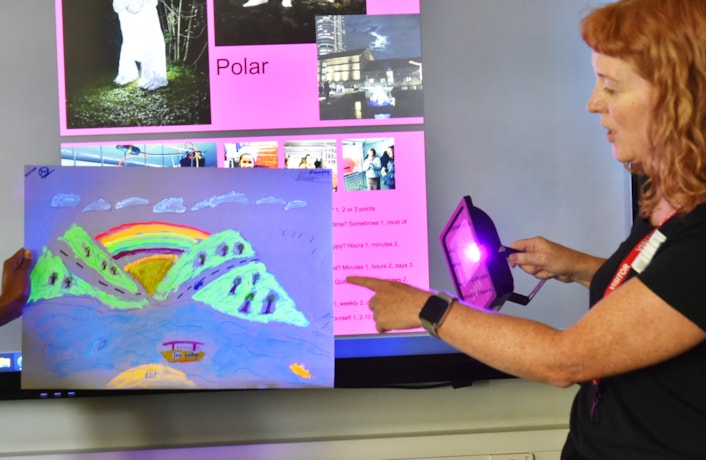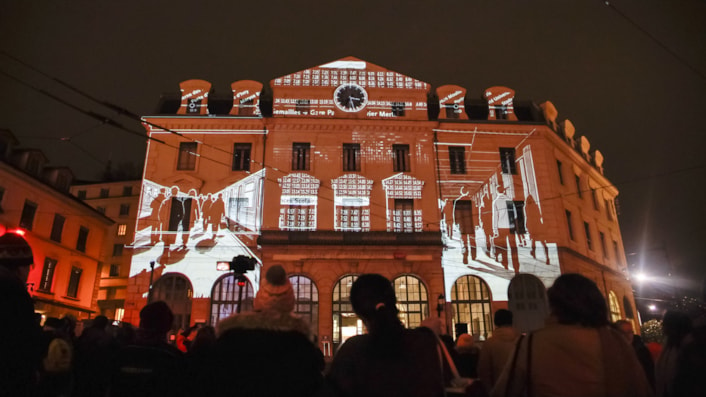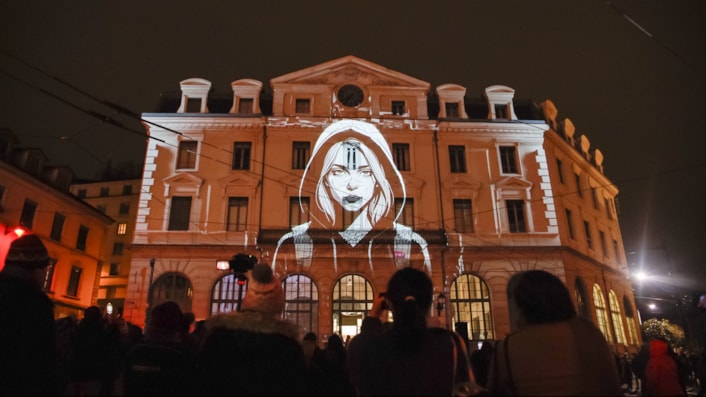Media library
Search by keyword
1935 items found, showing page 19 of 162

Music Leeds Us
Esther Amis-Hughes, Leeds Museums and Galleries’ community engagement manager with a posted drum paying tribute to the Leeds music scene.

Music Leeds Us
Leeds City Museum's exhibitions curator Laura Irwin with a violin used by The Legendary Len Liggins, a member of Leeds band The Ukrainians.

idontloveyouanymore - The Matter of the Heart
For the installation called The Matter of the Heart, created by idontloveyouanymore, a collection of local residents will be wearing a heart monitor for the duration of Light Night Leeds. Each person has a corresponding lightbox in the artwork that will flash in time with their beat, and wherever the participants are during this time their hearts will be seen flashing together.

Primary school Light Night
This year, Light Night Leeds is working with four local primary schools inspiring the next generation of light artists. Guided by artist Gemma Wood, children are asked to design the most imaginative artwork using light, without being hampered by practical restrictions.

Primary school Light Night 1
Guided by artist Gemma Wood, children are asked to design the most imaginative artwork using light, without being hampered by practical restrictions.

Primary school Light Night 2
For this year's Light Night, artist Gemma Wood is working with primary schools to help children design the most imaginative artwork using light.

PERPETUUM - Katja Heitmann (c) Sander van der Schaaf 5
For the piece Motus Mori PERPETUUM, Katja Heitmann has created an immersive and deeply moving video installation, where the movements of 12 people from Leeds are projected on a monumental scale.

KEEP community day at John Charles
1,890 pieces of sport kit were donated at an event held at John Charles Centre for Sport, to tackle inequality in sports.

One Second Lovestory 01
One Second Lovestory by Dirk Rauscher is set in a busy station in the morning.

One Second Lovestory 04
The installation will be projected onto The Queens Hotel during Light Night Leeds, which takes place on October 22 and 23.

One Second Lovestory 03
The artwork by Dirk Rauscher tells the story of two people whose daily routine is interrupted as their eyes meet at a train station.

Unearthed at Leeds Central Library
As well as the books on display, the exhibition features The Speaking Garden a multimedia installation inspired by the library’s collection and the gardeners of Leeds.
Filled with colourful projected visuals and a soothing soundscape from Buffalo Sound Design, the installation seeks to create a ‘garden of voices’ by inviting local growers to submit their own audio clips about what gardening means to them.